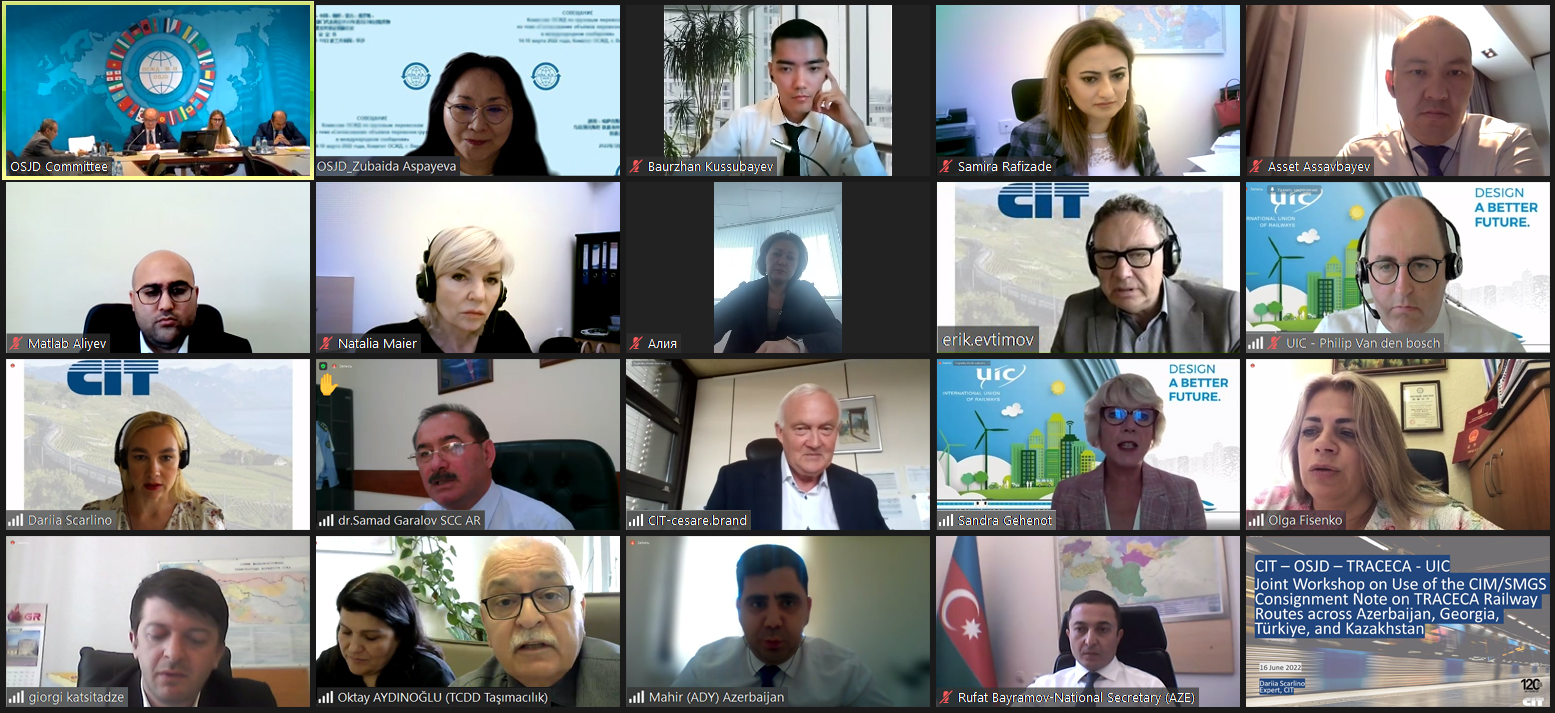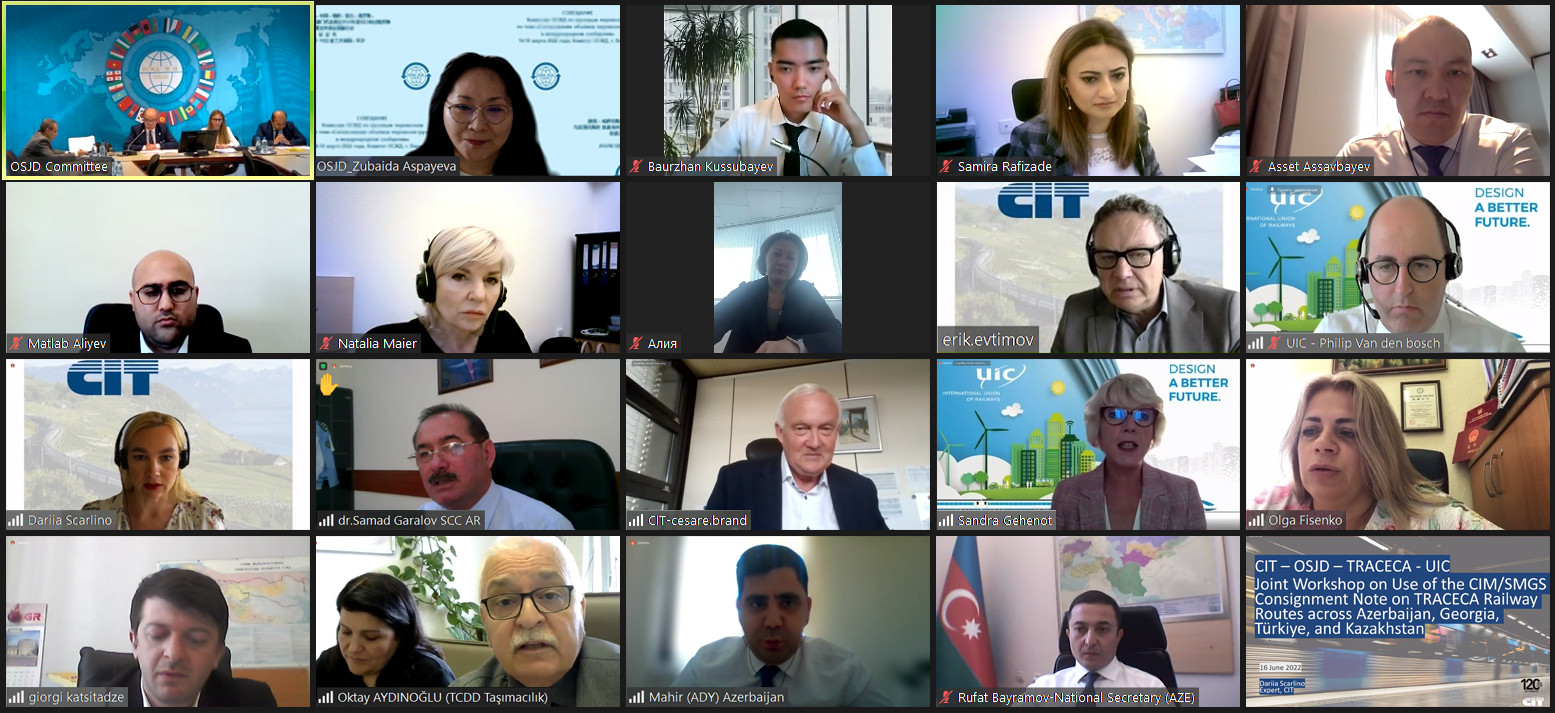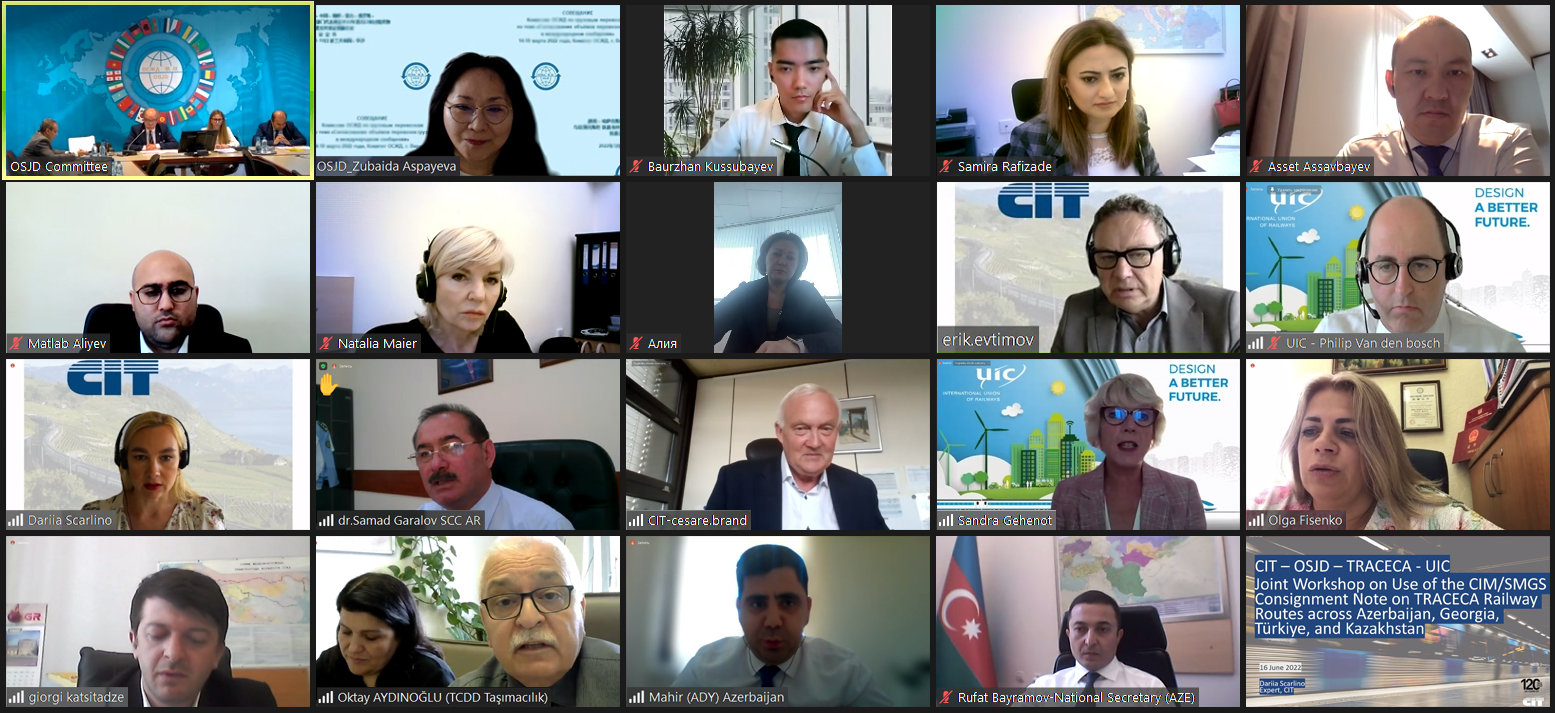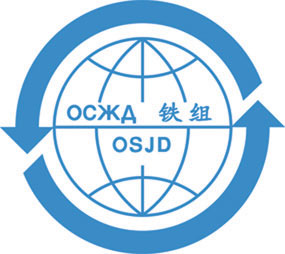Joint seminar on the application of the CIM/SMGS consignment note on the TRACECA railway routes



The joint OSJD-CIT-TRACECA-UIC seminar on the use of the CIM/SMGS consignment note on the TRACECA railway routes passing through Azerbaijan, Georgia, Turkey (Türkiye) and Kazakhstan was held on 16 June 2022 using the video conferencing mode.
The TRACECA Secretary General, Asset Asavbaev, Chairman of the OSJD Committee, Mirosław Antonowicz, CIT Secretary General, Cesare Brand, and Director of Freight, International Union of Railways (UIC), Sandra Géhénot addressed the participants with welcoming addresses. The seminar was aimed to discuss the issues of mutual cooperation and use of the unified CIM/SMGS consignment note on the TRACECA railway routes.
TRACECA (an abbreviation standing for Transport Corridor Europe-Caucasus-Asia) is a programme of international cooperation between the European Union and partner countries for the organisation of the Europe- Caucasus-Asia transport corridor. In organisational terms, TRACECA is an intergovernmental commission, and its Secretariat is located in the capital of Azerbaijan, the city of Baku.
The TRACECA programme was initiated at a conference held in Brussels in May 1993 with the participation of the ministers of trade and transport from 8 countries: Azerbaijan, Armenia, Georgia, Kazakhstan, Kyrgyzstan, Tajikistan, Turkmenistan and Uzbekistan. In subsequent years, Ukraine, Mongolia, Moldova, Turkey, Romania, Bulgaria and Iran joined the programme. Lithuania and Greece have an observer status.
As part of the cooperation development between OSJD and TRACECA, on 23 August 2021, an exchange of views took place between the delegation of the OSJD Committee headed by the Chairman of the OSJD Committee Mirosław Antonowicz and the delegation of TRACECA headed by the Secretary General Asset Asavbayev.
Within the framework of the seminar, 6 sessions were held on various topics, during which the participants were presented with reports and presentations on various aspects of transportation along the TRACECA route using the CIM/ SMGS consignment note. From the OSJD Committee side the presentations were made by the Chairperson of the Commission on Transport Law Olena Oleksiy and Chairperson of the Commission on Freight Traffic Zubaida Aspayeva, who informed the participants in detail about the legal, organisational, technical and financial aspects of transportation along this corridor.
Session 1. General legal and technical requirements for the use of CIM/SMGS consignment note
Detailed information on the CIM/SMGS consignment note developed jointly by OSJD and CIT was considered. Within the framework of SMGS, the use of CIM/SMGS application is regulated by Annex 6 to SMGS. As part of the digitalisation process, the CIT and OSJD jointly developed the Specifications for the CIM/SMGS electronic consignment note.
Session 2. Experiences and best practices in implementation of the CIM/SMGS consignment note
The participants in the seminar shared their experience and practices of implementing the CIM/SMGS consignment note and related existing initiatives from the user’s point of view. Opportunities have been also presented to capitalise on the existing best practices for the use of the CIM and/ or SMGS consignment notes with a view to replication and implementation when using the CIM/SMGS consignment note.
Session 3. Readiness and constraints in selected TRACECA countries to use the CIM/SMGS consignment note (and application of the electronic CIM/SMGS electronic consignment note)
Representatives of railway companies from Azerbaijan, Georgia, Turkey and Kazakhstan presented brief reviews on the development of the legal framework, operational readiness and identified restrictions on the use of the CIM/SMGS consignment note from the legal, institutional and user points of view.
Session 4. Use of the CIM/SMGS consignment note in customs transit procedures (existing practices and potential new arrangements; MLA and Technical Annex “On the international customs transit procedures in TRACECA for the carriage of goods by rail using the SMGS railway consignment note”)
As part of the consideration of this topic, the recommendations contained in international conventions on the use of consignment note as a customs transit declaration, as well as some existing practices in this regard, were outlined.
A discussion was held on the possible expansion of the Technical Annex to the MLA TRACECA “On the procedures for international customs transit in TRACECA for the carriage of goods by rail using the SMGS consignment note” (including the CIM/SMGS consignment note).
The legal framework and current practice of applying the customs transit procedures for railways (under the application of the CIM and SMGS consignment notes) and the requirements for the possible use of the CIM/SMGS consignment note in customs transit procedures in the future, as well as a vision regarding the application of the Technical Annex to the MLA TRACECA “Procedures for the international customs transit in TRACECA for the carriage of goods by rail using the SMGS consignment note” (and potential expanding by means of including the CIM/SMGS consignment note).
Session 5. Use of the CIM/SMGS consignment note in multimodal transport (multimodal transport documents; potential integration of the CIM/SMGS railway consignment note and maritime transport documents)
Efforts to increase the efficiency of multimodal transport are necessary to ensure transport links along the TRACECA routes. The existing initiatives of international organisations in the field of transport related to railway transport as part of multimodal transport and the role of the CIM/SMGS consignment note in their organisation were considered. The possibilities of integration and interaction between railway and maritime transport documents were considered based on the current practices in organising multimodal transport operations, including the railway ones, and expectations from the use of the CIM/SMGS in multimodal transport in the future were outlined.
Session 6. Open discussion on ways to address identified issues in the use of the CIM/ SMGS consignment note in the TRACECA participating countries
In the course of an open discussion, the results of all previous meetings were summed up and, using specific examples, the state of the existing legal frameworks and requirements for legislative changes at the national level were considered in order to start introducing the CIM/ SMGS consignment note in the TRACECA participating countries, as well as the possibilities of organising various events to inform consumers and support increased demand were considered.
Potential limitations for the implementation of the CIM/SMGS railway consignment note from the legal, institutional and user points of view, as well as mechanisms for future joint activities, including pilot projects on the use of the CIM/ SMGS consignment note, were noted.
